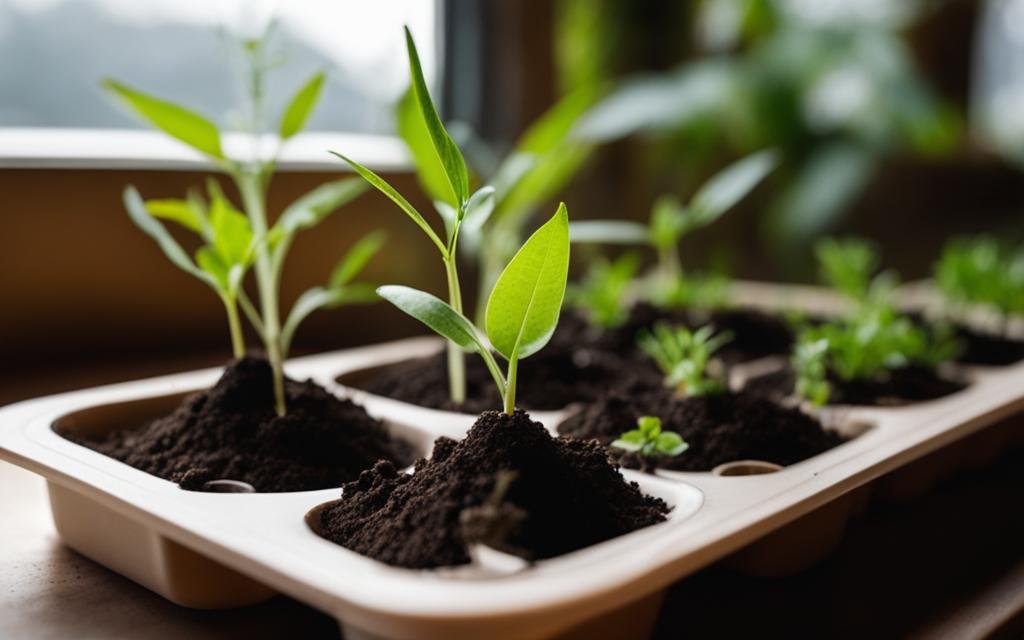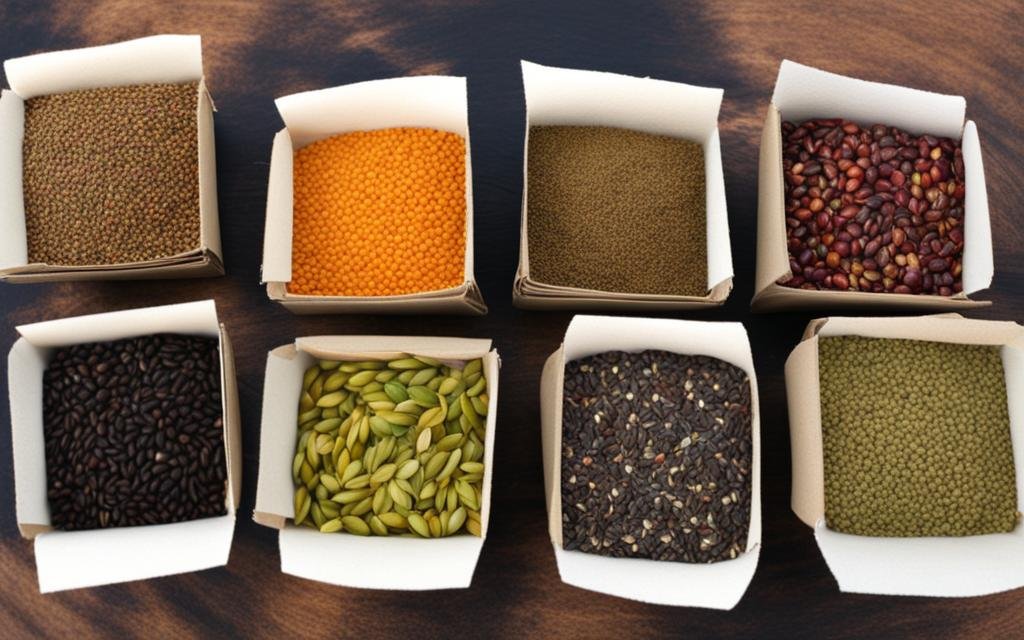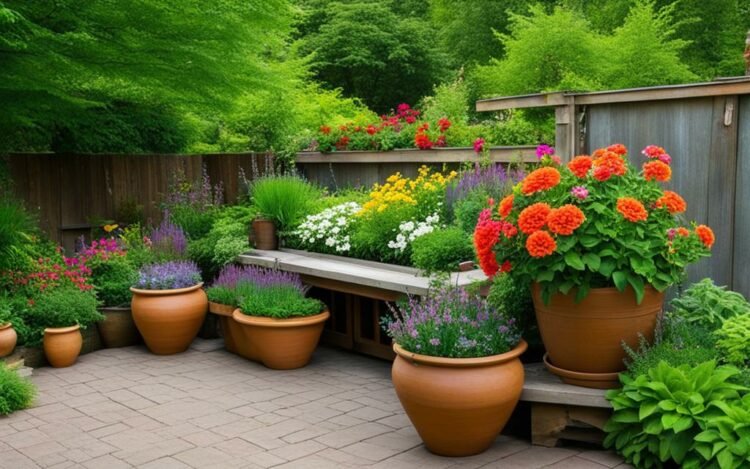Gardening on a budget doesn’t mean sacrificing a beautiful garden. By implementing smart plant shopping strategies and cost-effective landscaping techniques, you can create a stunning garden without breaking the bank. Here are some tips to help you make the most of your gardening budget.
When you’re gardening on a budget, it’s essential to be strategic with your plant purchases. Consider these smart plant shopping tips:
- Choose perennial plants that will come back year after year, reducing the need to purchase new plants annually.
- Look for discounted plants at local nurseries or garden centers, especially during end-of-season sales.
- Consider buying smaller plants and allowing them to grow and fill in over time.
- Explore online plant retailers that offer competitive prices and deals.
In addition to smart plant shopping, there are several cost-effective landscaping techniques you can employ:
- Use mulch to suppress weeds and conserve moisture, reducing the need for additional plants or water.
- Create a focal point in your garden with a striking, budget-friendly centerpiece, such as a decorative stone or sculpture.
- Opt for native plants that are well-suited to your climate and require minimal maintenance and watering.
- Consider DIY projects for garden structures, such as trellises or raised beds, using affordable materials like reclaimed wood or PVC pipes.
Gardening on a budget is all about being resourceful and creative. With these tips in mind, you can design a beautiful garden that reflects your style without breaking the bank.
Key Takeaways:
- Choose perennial plants and look for discounted options to save on plant purchases.
- Use mulch, native plants, and DIY projects to create a cost-effective landscape.
- Be resourceful and creative in your gardening approach to maximize your budget.
Grow from Seeds, Not Starts
Starting plants from seeds is a cost-effective and rewarding way to create a diverse garden. When you opt for seeds instead of buying seedlings, you save money and have the opportunity to grow a larger quantity of plants. A pack of seeds costs significantly less than a six-pack of seedlings, allowing you to stretch your gardening budget further.
Not only does growing from seeds save you money, but it also gives you more control over the growing process. You can choose from a wide variety of seeds, including heirloom and rare plant varieties that may not be available as seedlings at your local nursery. By starting seeds indoors, you also gain a head start on the growing season, ensuring that your plants have a longer period of time to mature and produce a bountiful harvest.
Seedlings vs Seeds: Pros and Cons
- Seedlings: Pros: Convenient, no need for indoor setup, can be directly planted into the garden. Cons: More expensive, limited variety, less control over plant health and quality.
- Seeds: Pros: Cost-effective, wide variety, greater control over plant health and quality. Cons: Requires indoor setup, longer time to transplant into the garden.
While starting seeds indoors may require a bit more effort in terms of providing the right growing conditions and regular monitoring, it can be a worthwhile investment of time and energy. However, if you prefer a time-efficient option, you can still sow seeds directly in the garden bed when the weather and soil conditions are right.

By choosing to grow from seeds, you not only save money but also gain the satisfaction of nurturing a plant from its earliest stages of life. So, get your hands dirty and enjoy the process of watching your garden thrive from the seeds you sow.
Take Advantage of Seed Swaps
Attending seed swaps is a fun and cost-effective way to diversify your plant collection without spending a dime. Seed swaps are events where gardeners bring seeds they have saved and trade them with others. It’s a great opportunity to discover new plant varieties and connect with fellow garden enthusiasts. By participating in seed swaps, you can obtain a wide range of seeds for free, allowing you to experiment with different plants and expand your gardening horizons.
Not only do seed swaps offer the chance to acquire free seeds, but they also promote sustainability and community. By saving and exchanging seeds, gardeners contribute to seed preservation and genetic diversity. Additionally, seed swaps provide a platform for sharing knowledge and experiences, fostering a sense of camaraderie among participants.
To maximize your seed swap experience, consider attending local gardening events or joining online gardening communities. These platforms often organize seed swaps or can connect you with fellow gardeners willing to trade seeds. Remember to save seeds from your own garden to contribute to future swaps and ensure a continuous cycle of sharing and abundance.
Key Takeaways:
- Seed swaps are events where gardeners bring saved seeds to trade with others.
- Attending seed swaps allows you to diversify your plant collection for free.
- Seed swaps promote sustainability, genetic diversity, and community.
- Participating in seed swaps can lead to the discovery of new plant varieties and connections with fellow garden enthusiasts.

By taking advantage of seed swaps, you can enhance your garden’s biodiversity, acquire unique plant varieties, and foster a sense of community among fellow gardeners. So, start saving your seeds, find a seed swap near you, and get ready to embark on an exciting gardening journey filled with free seeds and new discoveries.
Repurpose and Upcycle for Creative Garden Solutions
If you’re looking for budget-friendly ways to enhance your garden, why not get creative and repurpose items you already have? Not only will this save you money, but it will also add a unique touch to your outdoor space. Here are some ideas for repurposing and upcycling materials for your garden:
1. DIY Planters
Instead of purchasing expensive planters, consider repurposing containers you already have. Old bathtubs, wooden pallets, and even satellite dishes can be transformed into beautiful planters. Get creative with paint and decorations to add your personal touch. Not only will you save money, but you’ll also have one-of-a-kind planters that are sure to impress.
2. Upcycle for Garden Structures
Don’t limit your upcycling efforts to just planters. Bedsprings can make charming and unique trellises for climbing plants. Consider using old ladders or branches to create rustic arbors or frames for hanging plants. The possibilities are endless, and you’ll have a garden that stands out from the rest.
3. Urbanite: A Cost-Effective Alternative
Instead of investing in expensive flagstone or pavers, consider using broken concrete, also known as urbanite. This material can be found for free or at a minimal cost from construction sites or local recycling centers. With a little creativity, you can create beautiful pathways, stepping stones, and even garden walls using urbanite, saving you money while adding a unique touch to your garden.
By repurposing and upcycling materials, you’ll not only save money but also contribute to a more sustainable and eco-friendly garden. Get creative and let your imagination run wild as you transform everyday items into beautiful and functional garden features!
Explore Free or Low-Cost Gardening Resources
If you’re gardening on a budget, there are plenty of free or low-cost resources available to help you save money while still maintaining a beautiful garden. By foraging for gardening supplies, accessing free compost and mulch, and finding budget-friendly gardening tools, you can make the most of what nature and your community have to offer.
1. Forage for Gardening Supplies
One way to save money is by foraging for gardening supplies. Look around your neighborhood or local parks for fallen branches, twigs, or stones that can be used for various garden projects. Bamboo poles, which can often be found for free from neighbors or friends, make excellent stakes for supporting tomato plants and other climbers.
2. Access Free Compost and Mulch
Municipalities often offer free compost and mulch made from green waste. Check with your local government or waste management department to find out if they provide these resources. Additionally, tree-cutting companies may provide free mulch, but be sure to inspect it for any invasive species or debris before using it in your garden.
3. Find Budget-Friendly Gardening Tools
Seeking out online platforms like Craigslist can be a great way to find free or inexpensive gardening tools. Many people give away their unused tools or sell them at a fraction of the cost. You can also visit flea markets and garage sales, where you may find affordable gardening tools in good condition.
By taking advantage of these free or low-cost gardening resources, you can save money while still enjoying the beauty and benefits of a well-maintained garden.
Conclusion
In conclusion, gardening on a budget is not only possible, but it can also be a rewarding and fulfilling experience. By employing smart strategies and taking advantage of cost-effective options, you can create a stunning garden without breaking the bank.
One of the key takeaways is to grow plants from seeds instead of buying expensive starts. Starting seeds indoors not only saves money but also gives you a head start on the growing season. Additionally, participating in seed swaps and saving seeds from your own garden can diversify your plant collection without spending any money.
Another budget-friendly approach is to repurpose and upcycle materials for creative garden solutions. Transforming old items into unique planters and garden structures not only adds character to your garden but also helps you save money on expensive hardscape materials. However, it’s important to exercise restraint and avoid cluttering your garden with too many upcycled items.
Lastly, exploring free or low-cost gardening resources can significantly reduce your expenses. Foraging for gardening supplies, such as bamboo poles, or seeking out free compost and mulch from municipalities can save you money. Additionally, scouring online platforms or visiting flea markets and garage sales for affordable gardening tools can be a cost-effective way to equip your garden.
FAQ
Q: Is starting plants from seeds really more cost-effective than buying seedlings?
A: Yes, starting plants from seeds is generally more affordable than buying seedlings. A pack of seeds costs significantly less and provides you with a larger quantity of plants compared to buying a single six-pack of seedlings.
Q: What is a seed swap?
A: A seed swap is an event where people bring seeds they have saved and trade them with other gardeners. It allows you to acquire new plant varieties without spending any money.
Q: Are repurposed materials suitable for gardening?
A: Yes, repurposing and upcycling items for gardening can be a creative and cost-effective solution. Items like old bathtubs, wooden pallets, and bedsprings can be transformed into unique planters and garden structures.
Q: How can I find free or low-cost gardening resources?
A: Bamboo poles can often be found for free from neighbors or friends. Tree-cutting companies may offer free mulch, and municipalities often provide free compost and mulch made from green waste. Online platforms like Craigslist and flea markets or garage sales can also be good sources for free or affordable gardening supplies.
Q: Is gardening on a budget still rewarding?
A: Absolutely! Gardening on a budget can be a rewarding experience. By implementing these strategies, you can create a beautiful garden while saving money. Remember to be creative, resourceful, and patient in your gardening journey.

